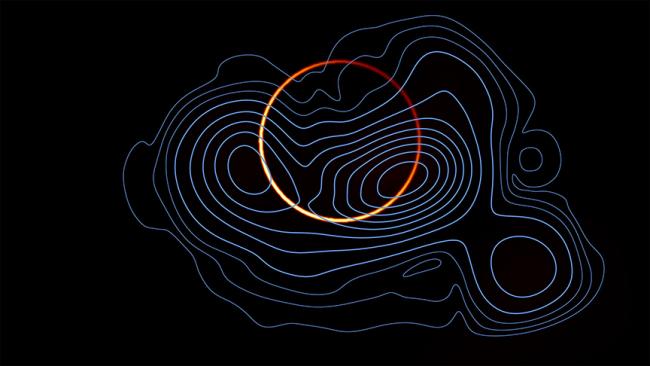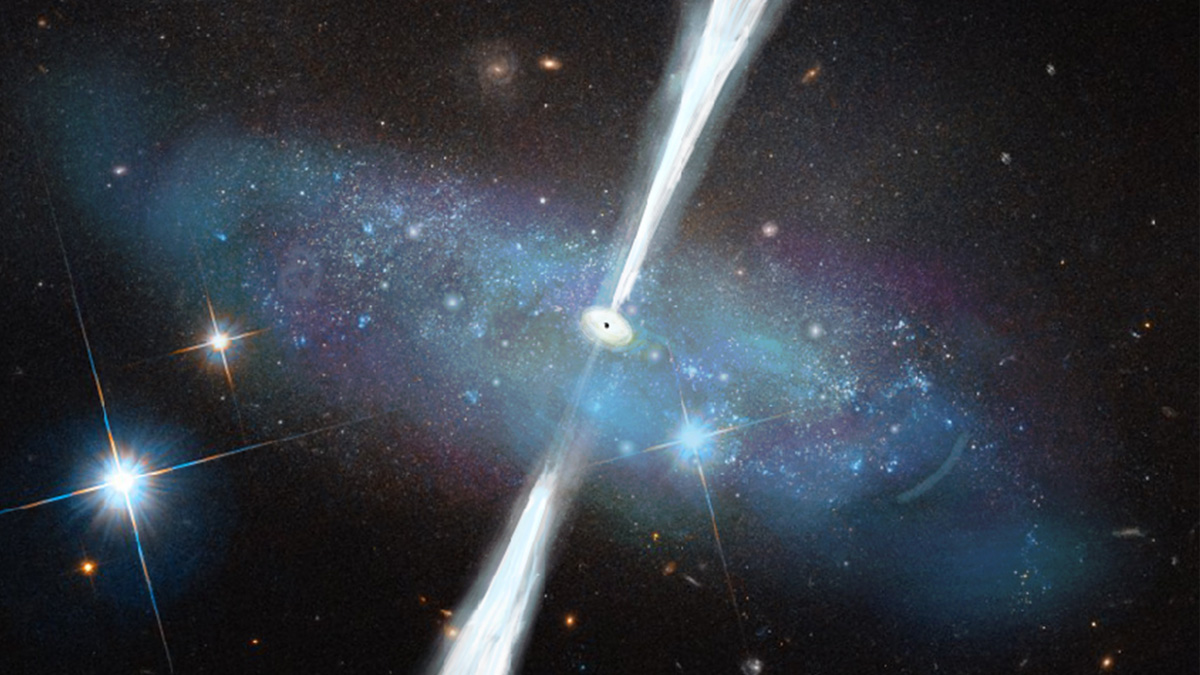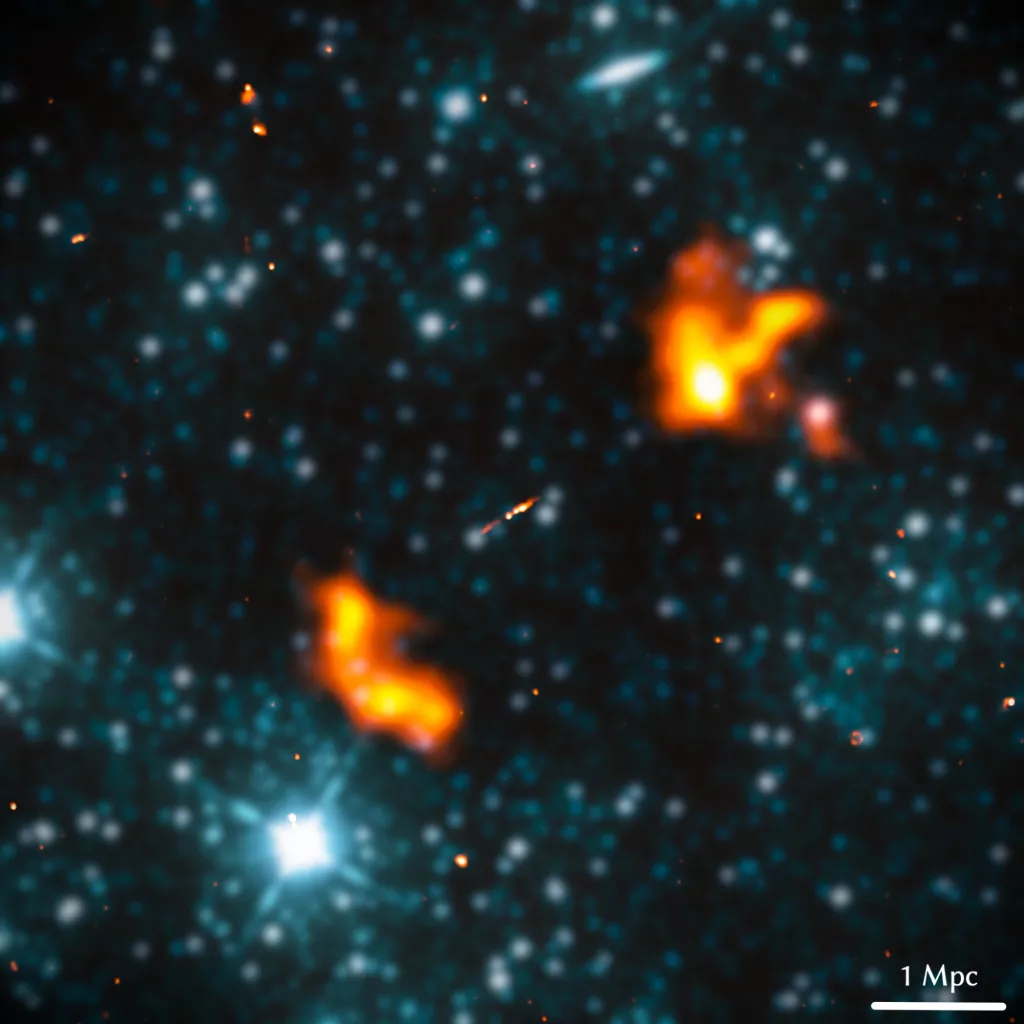
Credits: NASA/Pablo Garcia
Some of the brightest objects in the sky are called blazars...
Read More

Some of the brightest objects in the sky are called blazars...
Read More
Using new computational algorithms, scientists have measured a sharp ring of light predicted to originate from photons whipping around the back of a supermassive black hole.
When scientists unveiled humanity’s historic first image of a black hole in 2019 — depicting a dark core encircled by a fiery aura of material falling toward it — they believed even richer imagery and insights were waiting to be teased out of the data.
Simulations predict that, obscured by that bright orange glow, there should exist a thin, bright ring of light created by photons flung around the back of the black hole by its intense gravity.
Now, a team of researchers has combined theoretical predictions and sophisticated imaging algorithms to “remaster” the ori...
Read More
Newfound black holes in dwarf galaxies shed light on the origin of our galaxy’s supermassive black hole. A team led by researchers at the University of North Carolina at Chapel Hill has found a previously overlooked treasure trove of massive black holes in dwarf galaxies. The newly discovered black holes offer a glimpse into the life story of the supermassive black hole at the center of our own Milky Way galaxy.
As a giant spiral galaxy, the Milky Way is believed to have been built up from mergers of many smaller dwarf galaxies...
Read More
By a stroke of luck, a team led by Dutch Ph.D. student Martijn Oei has discovered a radio galaxy of at least 16 million light-years long. The pair of plasma plumes is the largest structure made by a galaxy known thus far. The finding disproves some long-kept hypotheses about the growth of radio galaxies.
A supermassive black hole lurks in the center of many galaxies, which slows down the birth of new stars and therefore strongly influences the lifecycle of the galaxy as a...
Read More
Recent Comments